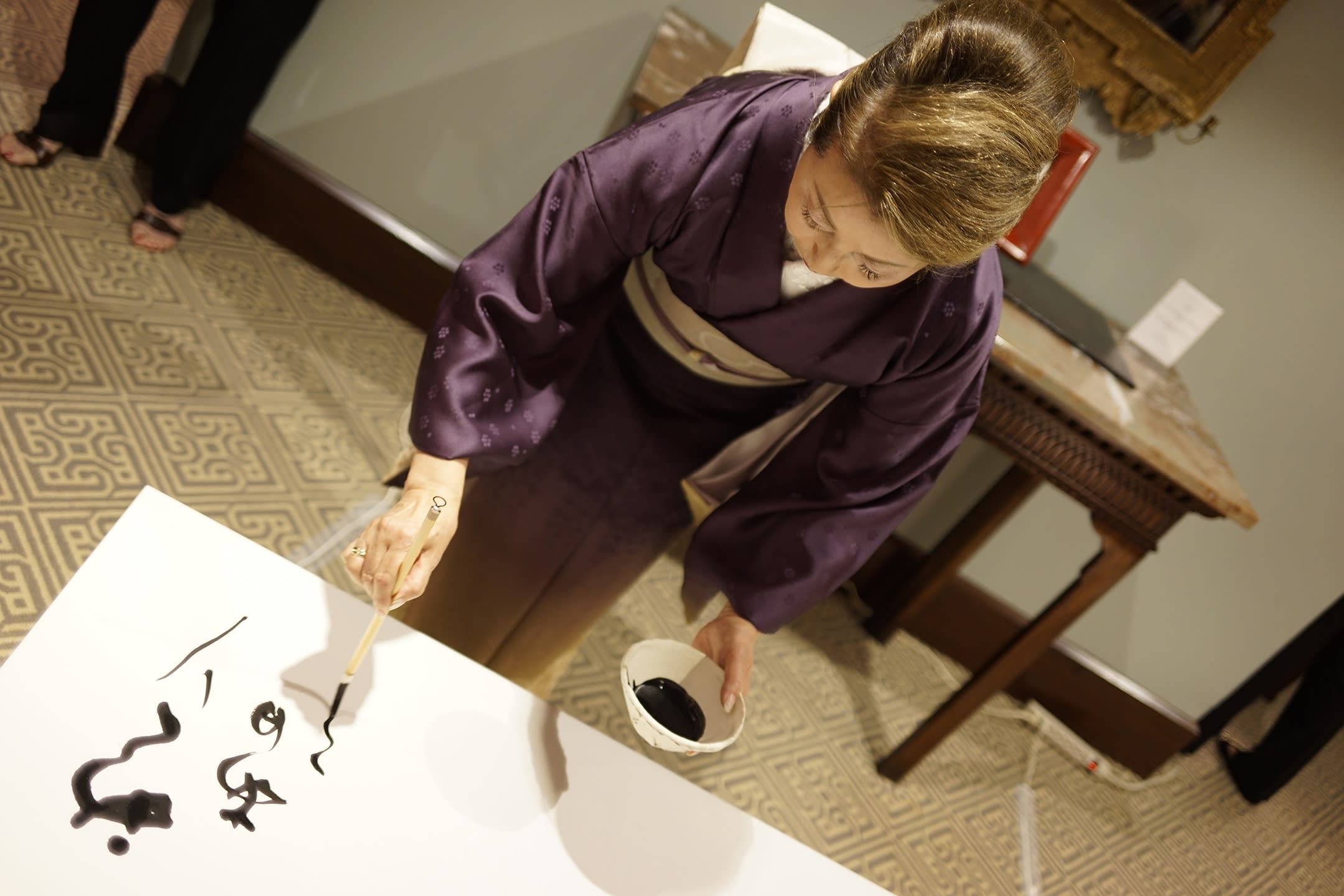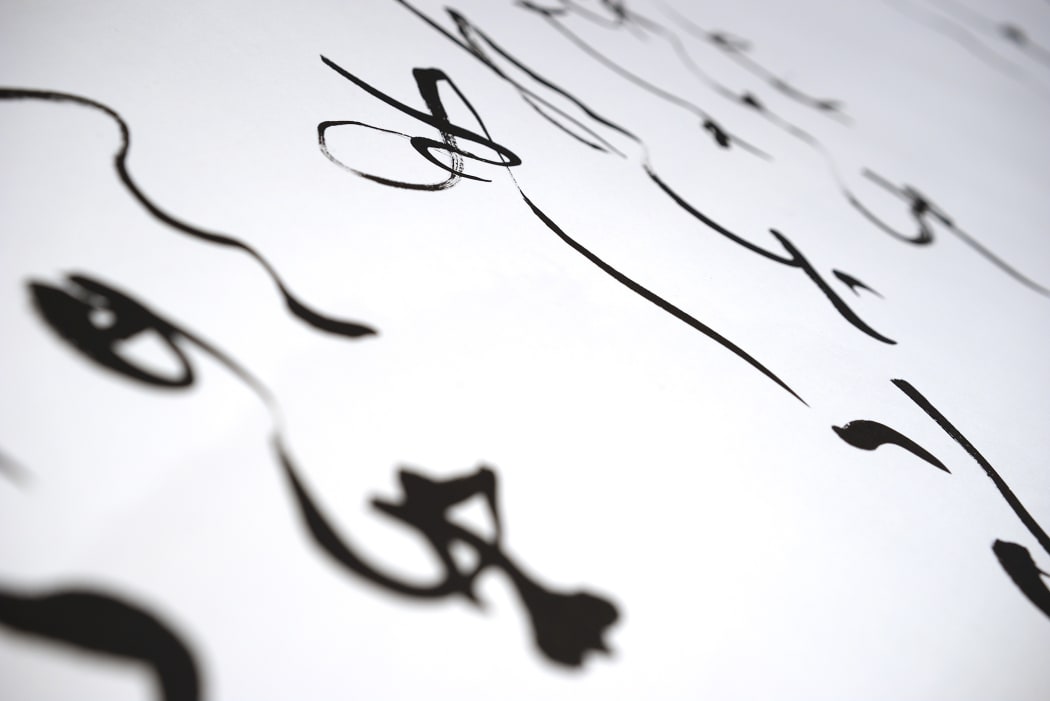
Suikei Saito is one of the few prominent women calligraphy artists which is why Ippodo Gallery is proud to champion her as a leading figure in the arts. Her work is full of life, warmth, and passion. While her strokes are elegant, they are also strong and defiant. As she applies the ink onto the paper, she is also providing a performance. Her body and soul are dancing, and the brush is her partner.
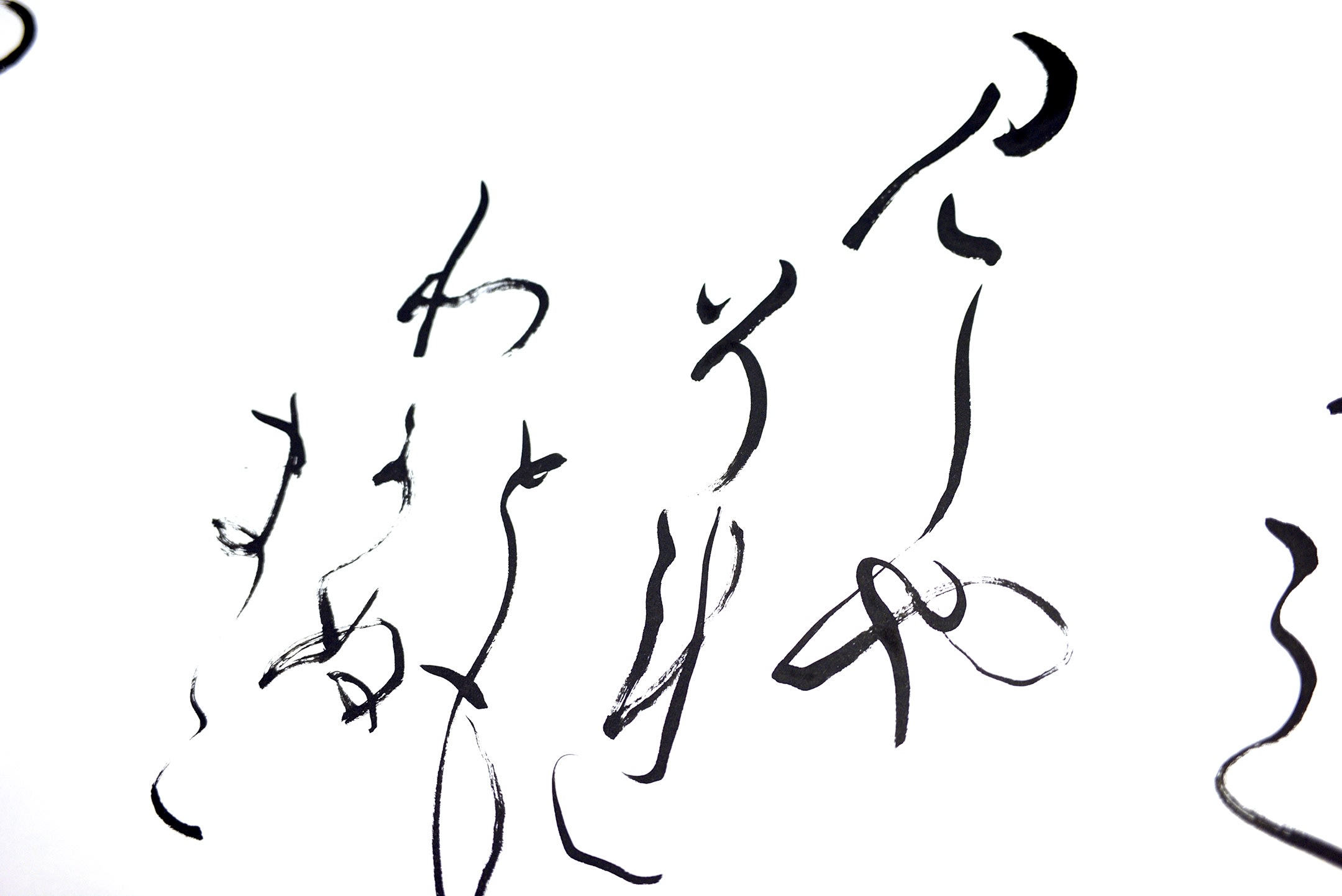
There are three main styles in Japanese calligraphy. 楷書 kaisho, standard block font is the foundation of all shodō styles. This style is what you’ll find on a keyboard or in everyday handwriting.
行書 Gyōsho is a less formal style and translates to “moving writing.” These more fluid and gestured characters are less angular and allow for more flow.
草書 sōsho is the most difficult to master and read. Since it is the most abstract, the characters flow into each other, so fewer strokes are needed. These fluid strokes allow the viewer to focus more on the emotions and aesthetics rather than read and understand the words.
As part of her practice, Saito studies the meaning and history of each character. In doing so, she keeps a journal of her thoughts and emotions during that time. She believes that her calligraphy is an act of mediation, a spiritual dance.
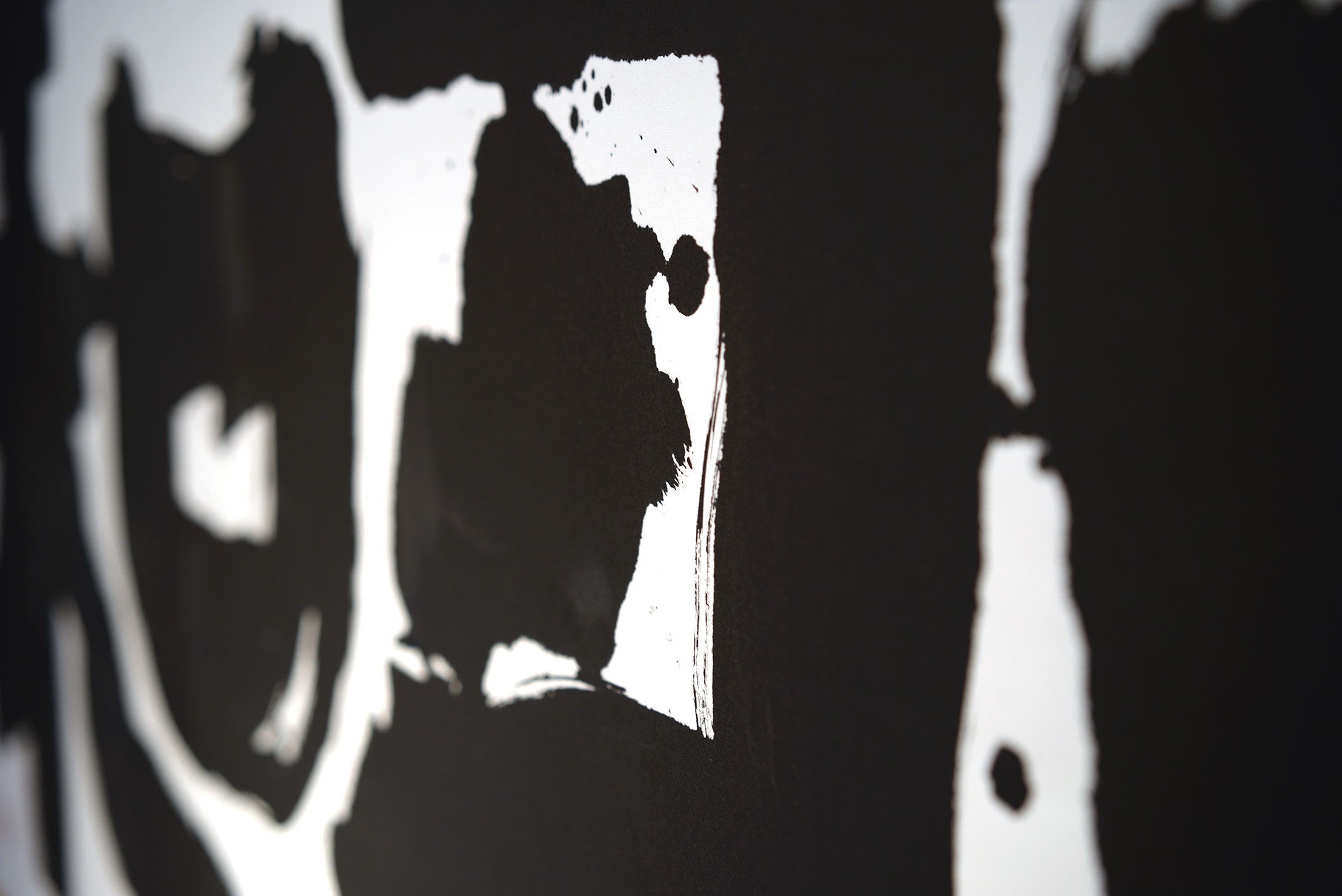 Here we see the character人 hito, human. While you lay your eyes on just one rendition, image the thousands of practice strokes that lead to this finale. This character reminds some of two people holding out their hands to support each other. Saito’s mission is to find ever-evolving meaning within each character.
Here we see the character人 hito, human. While you lay your eyes on just one rendition, image the thousands of practice strokes that lead to this finale. This character reminds some of two people holding out their hands to support each other. Saito’s mission is to find ever-evolving meaning within each character.
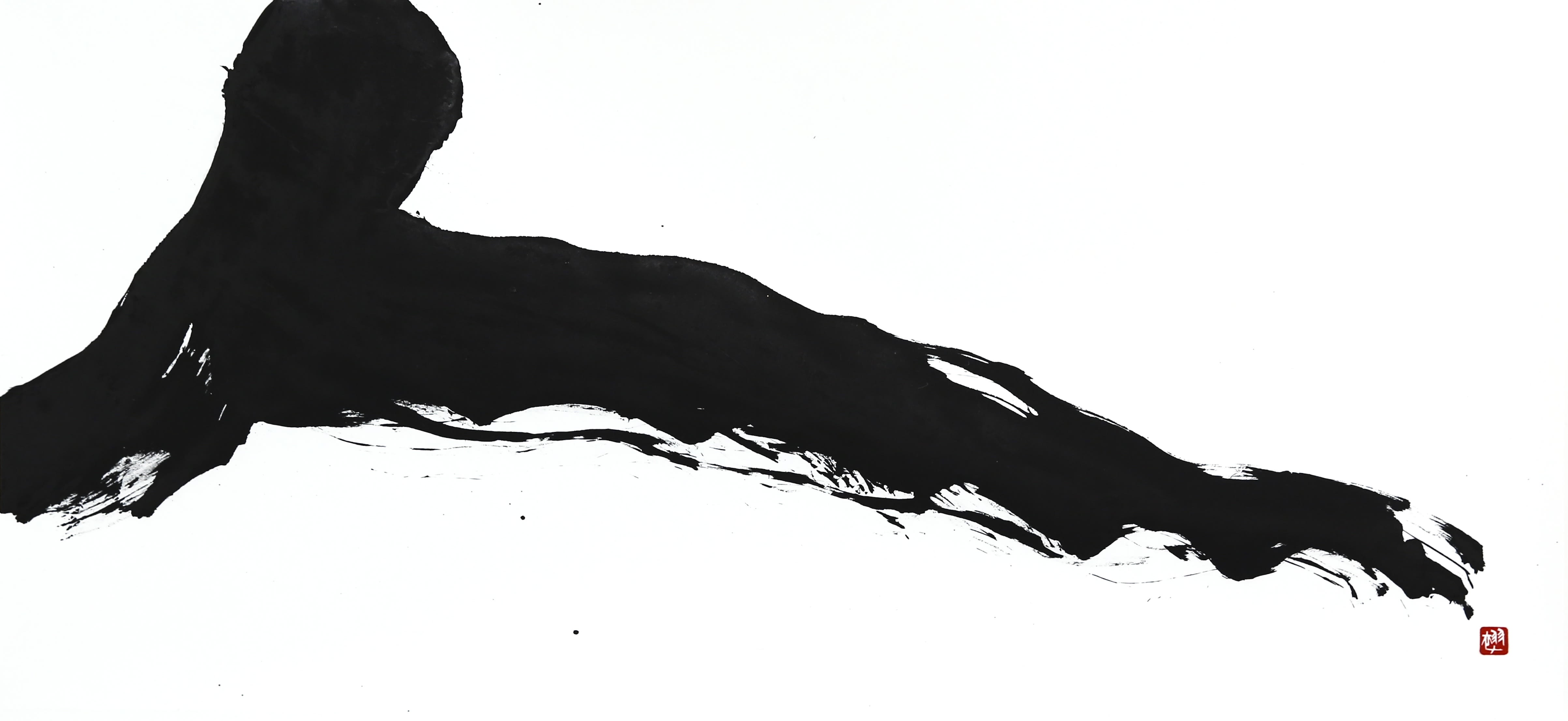
Here we see the character Kai, “return, turn around a time.” The form resembles the return to the world in the palm, which distinguishes black and white. An old Chinese proverb states, one must except their fate of life and death. Like returning to full circle, the river erosion occurs while also rejuvenating young life. There are numerous examples of these sayings, all of which emphasize the idea of return. Here we see Saito’s rendition of return in confident strokes.
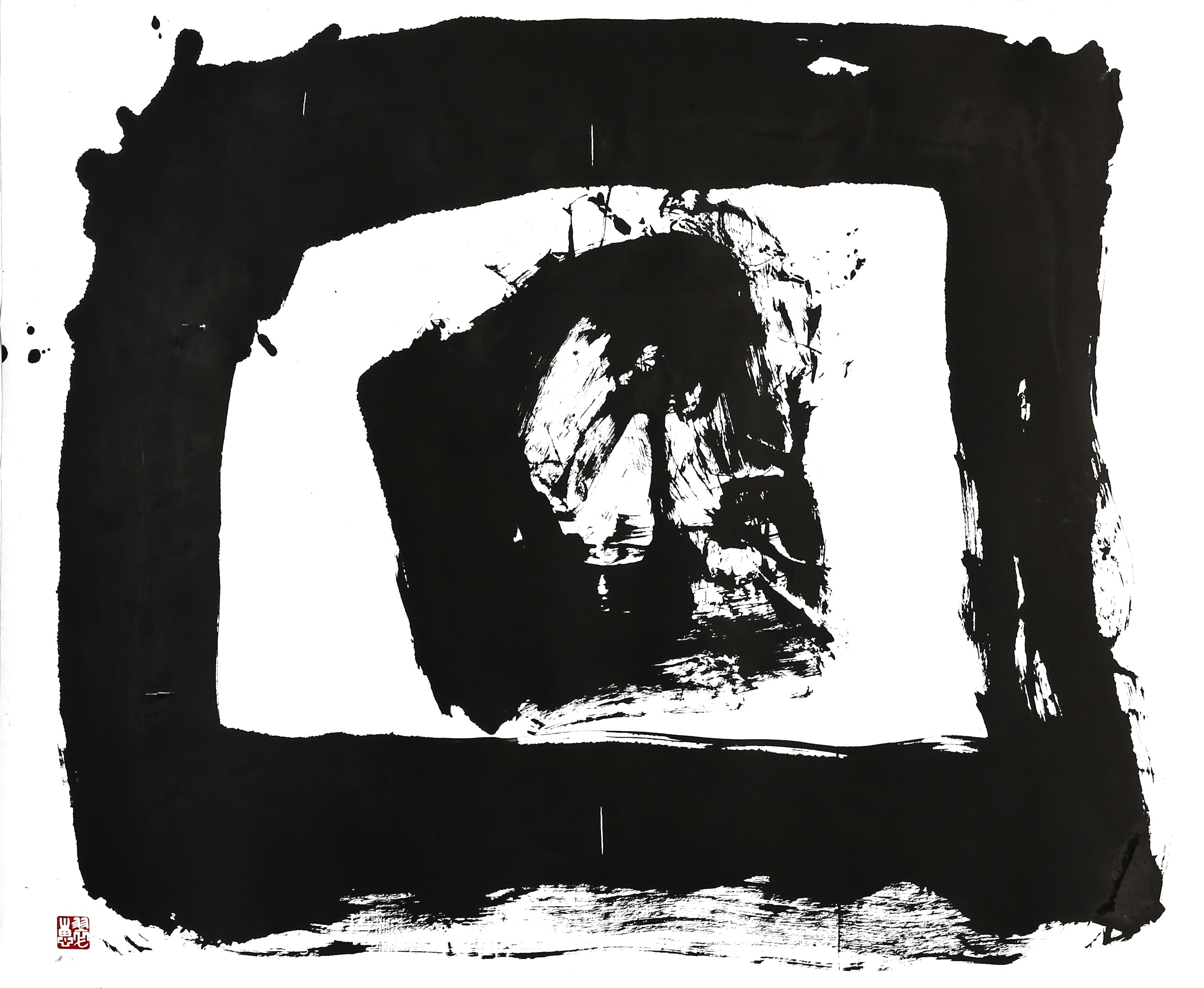
There are four essential tools needed in calligraphy. 文房四宝, bunbōshihō or “the four treasures of the study,” are 筆, fude, the brush, 墨, sumi, the ink, 和紙, washi, the paper, 硯, suzuri and the inkstone. The brushes are made of various animal hair such as sheep, raccoons, dogs, etc. The sumi ink attains its rich black color from three simple ingredients; soot, oil such as sesame, rapeseed, or soybean, and clue to form the stick. As one rubs the ink stick on a suzuir, or inkstone, drops of water form the glossy velvet liquid. Making ink is a tranquil and meditative process as well.

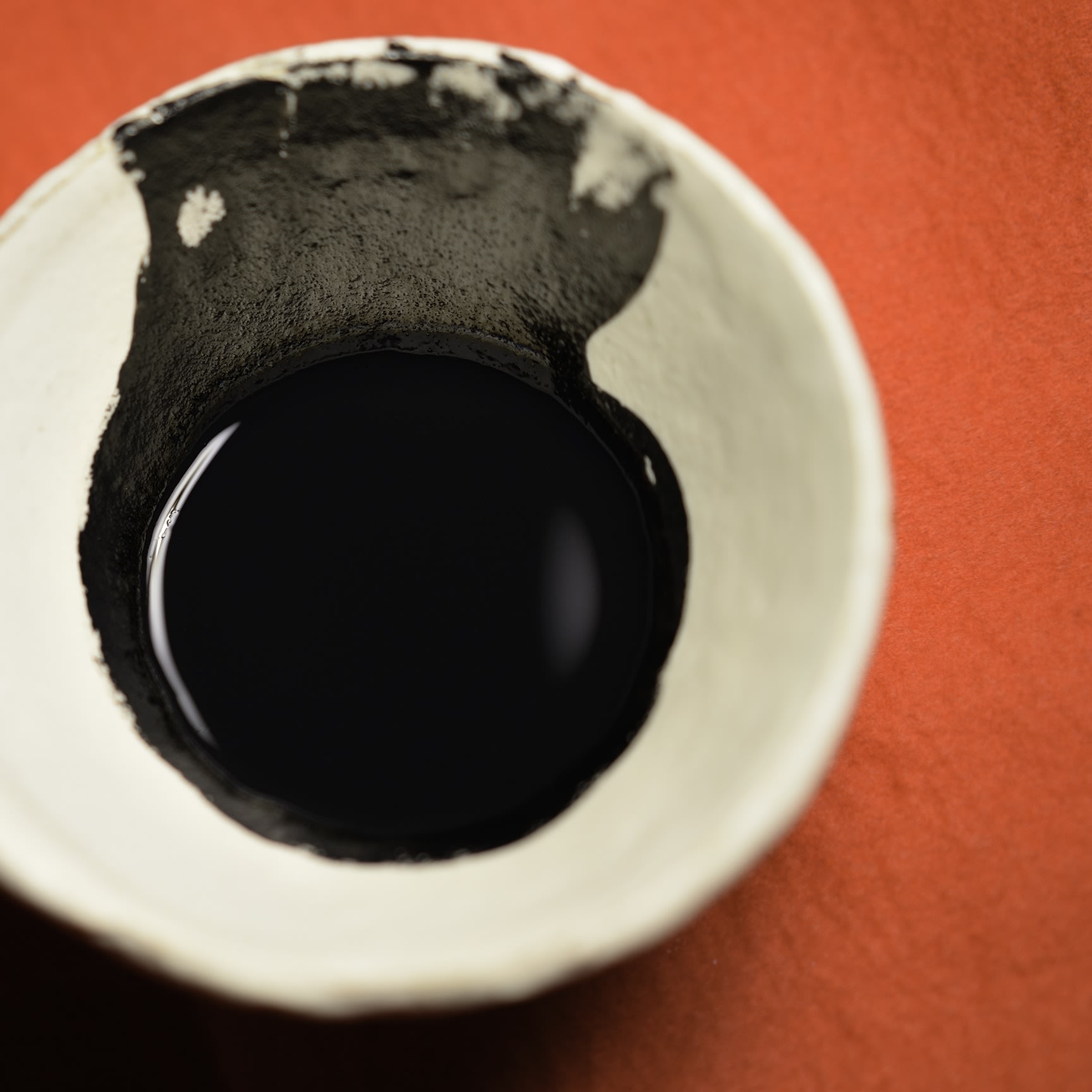
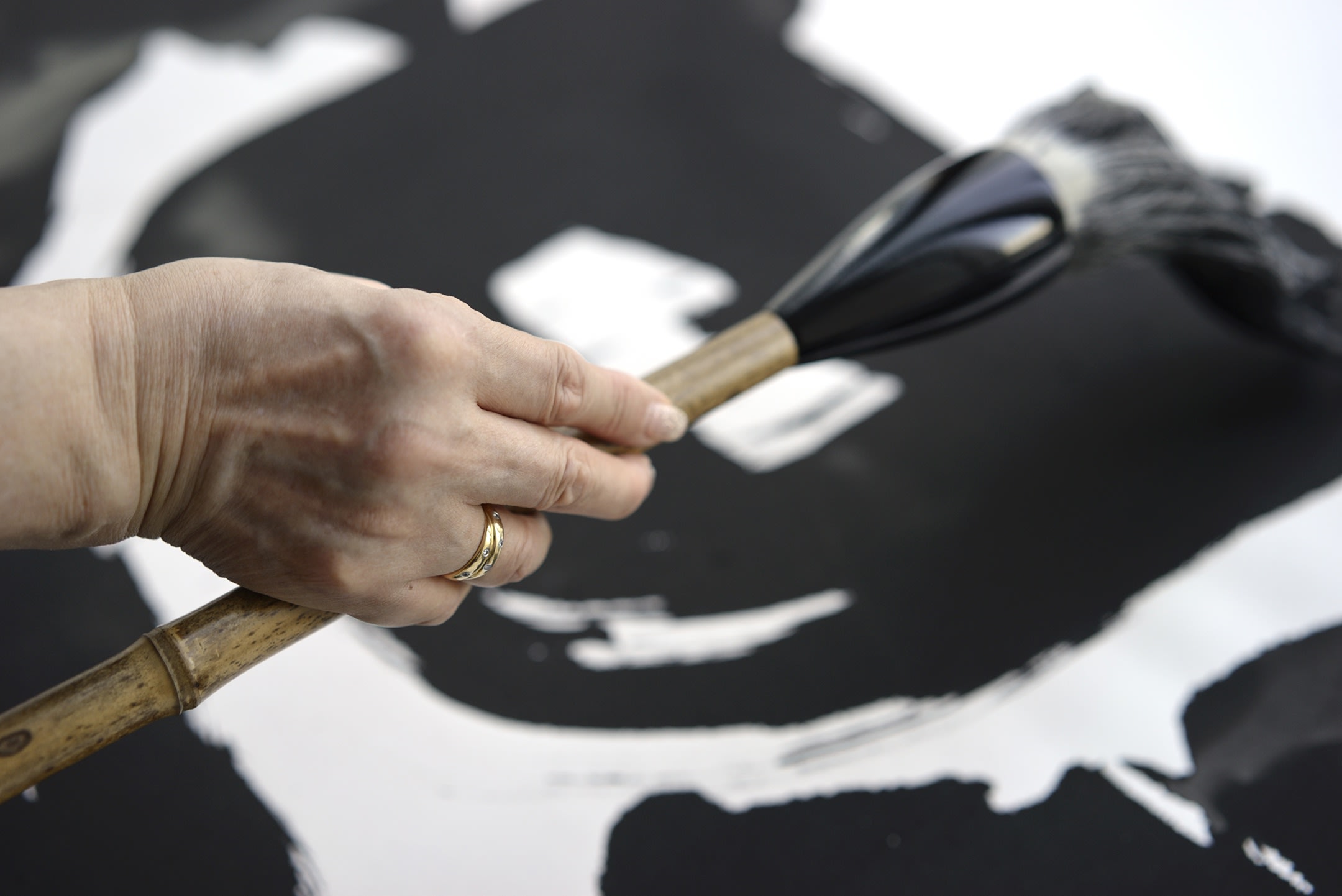
What makes Saito such a breathe taking calligrapher is her ability to make each stroke count with such meaning. It is no secreted that she only has one chance to express herself on the paper. Her talent is that the viewer can see the emotions, personality, and passion that oozes from her soul. After all, the way of writing is the path to enlightenment.
